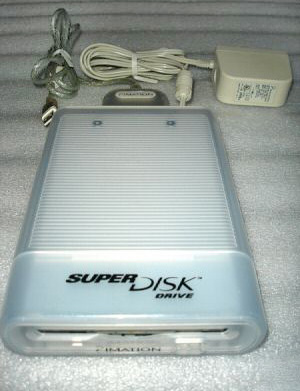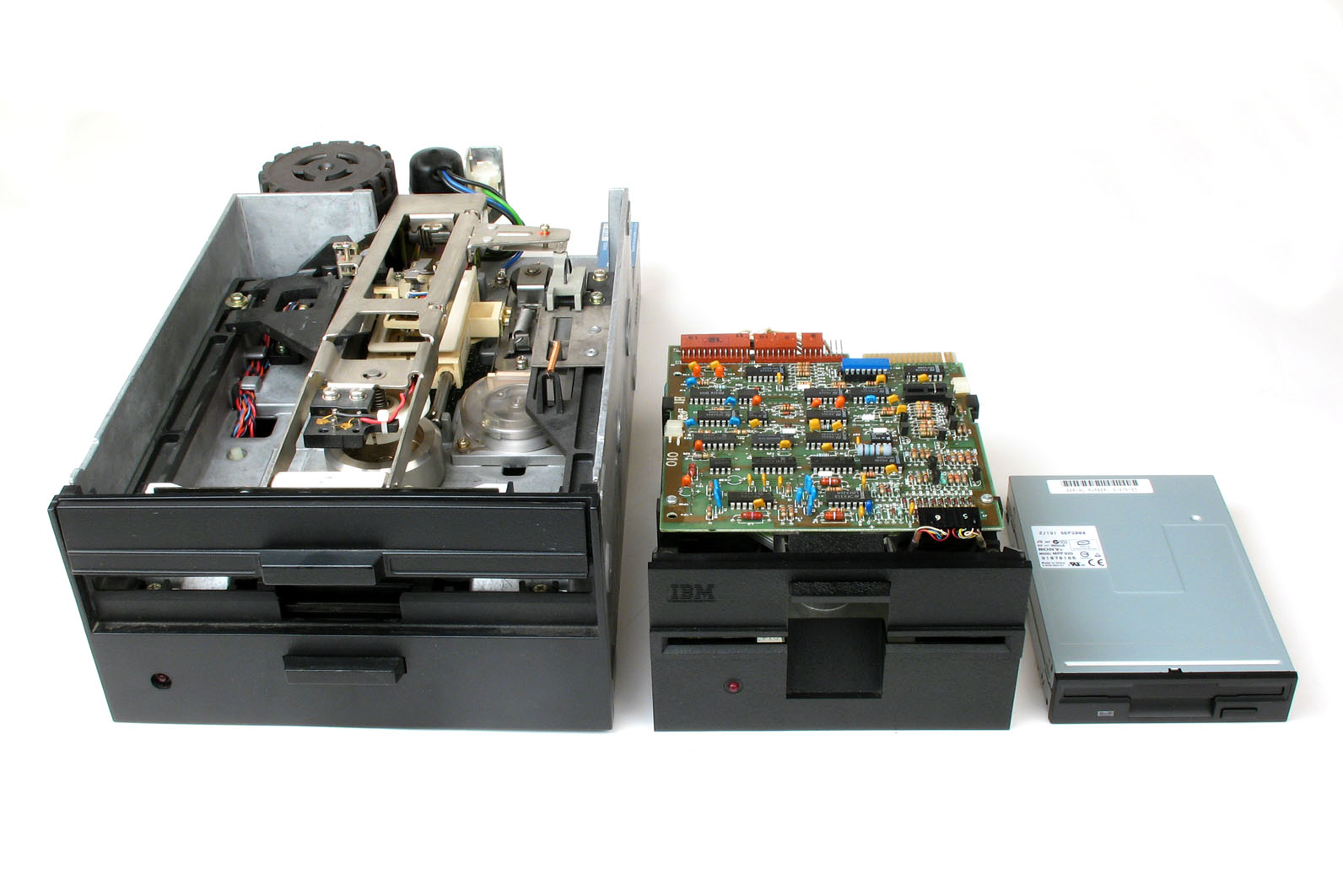|
It Drive
{{Use list-defined references, date=January 2022 The Caleb Technology UHD144 (''Ultra High Density'') is a floptical-based 144 MB floppy disk system introduced in early 1998, marketed as the it drive. Like other floptical-like systems, the UHD144 can read and write standard 720 KB and 1.44 MB 3½-inch disks as well. Its main advantage was the low cost of the media, which averaged about $5 shortly after introduction — in wider production prices would have fallen. The UHD144 had little chance in the marketplace, being squeezed out by the Iomega ZIP and Imation LS-120 for floppy large-storage needs, and the rapid introduction of the writable CD-ROM shortly after its introduction. The company went bankrupt in early 2002. See also * SuperDisk * Sony HiFD * Zip drive * Floppy disk A floppy disk or floppy diskette (casually referred to as a floppy, or a diskette) is an obsolescent type of disk storage composed of a thin and flexible disk of a magnetic storage me ... [...More Info...] [...Related Items...] OR: [Wikipedia] [Google] [Baidu] |
Floptical
Floptical refers to a type of floppy disk drive that combines magnetic and optical technologies to store data on media similar to standard -inch floppy disks. The name is a portmanteau of the words "floppy" and "optical". It refers specifically to one brand of drive and disk system, but is also used more generically to refer to any system using similar techniques. The original Floptical technology was announced in 1988 and introduced late in 1991 by Insite Peripherals, a venture funded company set up by Jim Adkisson, one of the key engineers behind the original -inch floppy disk drive development at Shugart Associates in 1976. The main shareholders were Maxell, Iomega and 3M. Technical aspects The technology involves reading and writing data magnetically, while optically aligning the read/write head in the drive using grooves in the disk being sensed by an infrared LED and sensor (a form of visual servo). The magnetic head touches the recording surface, as it does in a norm ... [...More Info...] [...Related Items...] OR: [Wikipedia] [Google] [Baidu] |
Floppy Disk
A floppy disk or floppy diskette (casually referred to as a floppy, or a diskette) is an obsolescent type of disk storage composed of a thin and flexible disk of a magnetic storage medium in a square or nearly square plastic enclosure lined with a fabric that removes dust particles from the spinning disk. Floppy disks store digital data which can be read and written when the disk is inserted into a floppy disk drive (FDD) connected to or inside a computer or other device. The first floppy disks, invented and made by IBM, had a disk diameter of . Subsequently, the 5¼-inch and then the 3½-inch became a ubiquitous form of data storage and transfer into the first years of the 21st century. 3½-inch floppy disks can still be used with an external USB floppy disk drive. USB drives for 5¼-inch, 8-inch, and other-size floppy disks are rare to non-existent. Some individuals and organizations continue to use older equipment to read or transfer data from floppy disks. Floppy disk ... [...More Info...] [...Related Items...] OR: [Wikipedia] [Google] [Baidu] |
Iomega ZIP
The Zip drive is a removable floppy disk storage system that was introduced by Iomega in late 1994. Considered medium-to-high-capacity at the time of its release, Zip disks were originally launched with capacities of 100 MB, then 250 MB, and finally 750 MB. The format became the most popular of the superfloppy products which filled a niche in the late 1990s portable storage market. However, it was never popular enough to replace the -inch floppy disk. Zip drives fell out of favor for mass portable storage during the early 2000s as CD-RW and USB flash drives became prevalent. The Zip brand later covered internal and external CD writers known as Zip-650 or Zip-CD, despite the dissimilar technology. Overview The Zip drive is a "superfloppy" disk drive that has all of the -inch floppy drive's convenience, but with much greater capacity options and with performance that is much improved over a standard floppy drive. However, Zip disk housings are much thicker tha ... [...More Info...] [...Related Items...] OR: [Wikipedia] [Google] [Baidu] |
Imation LS-120
The SuperDisk LS-120 is a high-speed, high-capacity alternative to the 90 mm (3.5 in), 1.44 MB floppy disk. The SuperDisk hardware was created by 3M's storage products group Imation in 1997, with manufacturing chiefly by Matsushita. The SuperDisk had little success in North America; with Compaq, Gateway and Dell being three of only a few OEMs who supported it. It was more successful in Asia and Australia, where the second-generation SuperDisk LS-240 drive and disk was released. SuperDisk worldwide ceased manufacturing in 2003. History The design of the SuperDisk system came from an early 1990s project at Iomega. It is one of the last examples of floptical technology, where lasers are used to guide a magnetic head which is much smaller than those used in traditional floppy disk drives. Iomega orphaned the project around the time they decided to release the Zip drive in 1994. The idea eventually ended up at 3M, where the concept was refined and the design ... [...More Info...] [...Related Items...] OR: [Wikipedia] [Google] [Baidu] |
CD-ROM
A CD-ROM (, compact disc read-only memory) is a type of read-only memory consisting of a pre-pressed optical compact disc that contains data. Computers can read—but not write or erase—CD-ROMs. Some CDs, called enhanced CDs, hold both computer data and audio with the latter capable of being played on a CD player, while data (such as software or digital video) is only usable on a computer (such as ISO 9660 format PC CD-ROMs). During the 1990s and early 2000s, CD-ROMs were popularly used to distribute software and data for computers and fifth generation video game consoles. DVD started to replace it in these roles starting in the early 2000s. History The earliest theoretical work on optical disc storage was done by independent researchers in the United States including David Paul Gregg (1958) and James Russel (1965–1975). In particular, Gregg's patents were used as the basis of the LaserDisc specification that was co-developed between MCA and Philips after MCA purchased ... [...More Info...] [...Related Items...] OR: [Wikipedia] [Google] [Baidu] |
Bankrupt
Bankruptcy is a legal process through which people or other entities who cannot repay debts to creditors may seek relief from some or all of their debts. In most jurisdictions, bankruptcy is imposed by a court order, often initiated by the debtor. Bankrupt is not the only legal status that an insolvent person may have, and the term ''bankruptcy'' is therefore not a synonym for insolvency. Etymology The word ''bankruptcy'' is derived from Italian ''banca rotta'', literally meaning "broken bank". The term is often described as having originated in renaissance Italy, where there allegedly existed the tradition of smashing a banker's bench if he defaulted on payment so that the public could see that the banker, the owner of the bench, was no longer in a condition to continue his business, although some dismiss this as a false etymology. History In Ancient Greece, bankruptcy did not exist. If a man owed and he could not pay, he and his wife, children or servants were forced into ... [...More Info...] [...Related Items...] OR: [Wikipedia] [Google] [Baidu] |
SuperDisk
The SuperDisk LS-120 is a high-speed, high-capacity alternative to the 90 mm (3.5 in), 1.44 MB floppy disk. The SuperDisk hardware was created by 3M's storage products group Imation in 1997, with manufacturing chiefly by Matsushita. The SuperDisk had little success in North America; with Compaq, Gateway and Dell being three of only a few OEMs who supported it. It was more successful in Asia and Australia, where the second-generation SuperDisk LS-240 drive and disk was released. SuperDisk worldwide ceased manufacturing in 2003. History The design of the SuperDisk system came from an early 1990s project at Iomega. It is one of the last examples of floptical technology, where lasers are used to guide a magnetic head which is much smaller than those used in traditional floppy disk drives. Iomega orphaned the project around the time they decided to release the Zip drive in 1994. The idea eventually ended up at 3M, where the concept was refined and the design ... [...More Info...] [...Related Items...] OR: [Wikipedia] [Google] [Baidu] |
Sony HiFD
The Sony HiFD (High capacity Floppy Disk) was a high-capacity floppy disk system developed by Sony and Fujifilm and introduced in late 1998. Development and sale of the drives was discontinued by early 2001. Announced in October 1997, HiFD disks offered a capacity of 200 MB while maintaining backwards compatibility with standard 720 KB and 1.44 MB diskettes. Sony initially planned to begin shipping the drives in the first half of 1998, however, the introduction was delayed until the end of the year. TEAC and Alps also planned to introduce HiFD drives. The first drives to reach the public were external parallel port models priced at $199. An internal ATA version was later offered, with a SCSI version planned but never launched. IBM offered an internal HiFD drive as an option on some of its workstations in 2000. Its immediate competitors were the popular Iomega Zip drive, which had a capacity of 100 MB and Imation's Laser-Servo LS-120 SuperDisk, which had a c ... [...More Info...] [...Related Items...] OR: [Wikipedia] [Google] [Baidu] |
Zip Drive
The Zip drive is a removable floppy disk storage system that was introduced by Iomega in late 1994. Considered medium-to-high-capacity at the time of its release, Zip disks were originally launched with capacities of 100 MB, then 250 MB, and finally 750 MB. The format became the most popular of the superfloppy products which filled a niche in the late 1990s portable storage market. However, it was never popular enough to replace the -inch floppy disk. Zip drives fell out of favor for mass portable storage during the early 2000s as CD-RW and USB flash drives became prevalent. The Zip brand later covered internal and external CD writers known as Zip-650 or Zip-CD, despite the dissimilar technology. Overview The Zip drive is a "superfloppy" disk drive that has all of the -inch floppy drive's convenience, but with much greater capacity options and with performance that is much improved over a standard floppy drive. However, Zip disk housings are much thicker th ... [...More Info...] [...Related Items...] OR: [Wikipedia] [Google] [Baidu] |
Floppy Disk
A floppy disk or floppy diskette (casually referred to as a floppy, or a diskette) is an obsolescent type of disk storage composed of a thin and flexible disk of a magnetic storage medium in a square or nearly square plastic enclosure lined with a fabric that removes dust particles from the spinning disk. Floppy disks store digital data which can be read and written when the disk is inserted into a floppy disk drive (FDD) connected to or inside a computer or other device. The first floppy disks, invented and made by IBM, had a disk diameter of . Subsequently, the 5¼-inch and then the 3½-inch became a ubiquitous form of data storage and transfer into the first years of the 21st century. 3½-inch floppy disks can still be used with an external USB floppy disk drive. USB drives for 5¼-inch, 8-inch, and other-size floppy disks are rare to non-existent. Some individuals and organizations continue to use older equipment to read or transfer data from floppy disks. Floppy disk ... [...More Info...] [...Related Items...] OR: [Wikipedia] [Google] [Baidu] |




.jpg)
.png)


